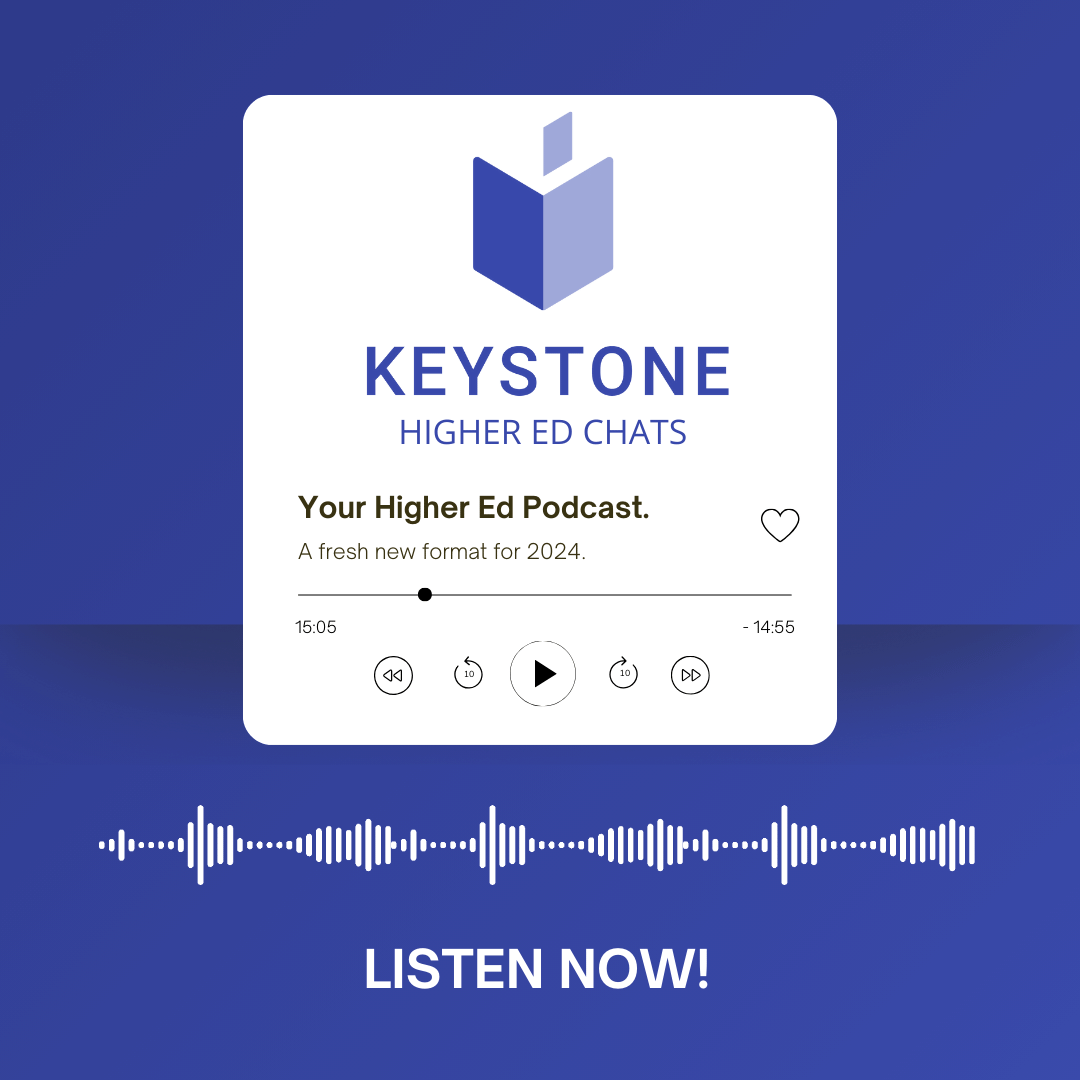- SERVICES
- HIGHER EDUCATION MARKETING
- ENGAGEMENT & ENROLLMENT MANAGEMENT
- STUDENT RECRUITMENT AGENCIES
- PROFESSIONAL EDUCATION & TRAINING
- WHO WE ARE
WHO WE ARE
Learn more about Keystone Education Group, including our leadership structure, why choose Keystone as your educational partner, and company press releases.
QUICK LINKS
- RESOURCES
RESOURCES
Find a range of helpful resources to help with your educational marketing. From on-demand webinars, reports & data, to customer testimonials and our downloadable media kit.
QUICK LINKS
- NEWS
- REQUEST A CALL

4 Things to Remember When Communicating with Potential Students
6 min read
|- Keystone Higher Education News
- 4 Things to Remember When Communicating with Potential Students
The internationalization of higher education has transformed the industry, with universities now competing to attract and recruit students on a global level. In the United States alone, reports show as many as 35% of first-year university students applied to seven or more universities in 2016. While today's students may have their preferences, they are not afraid to keep their options open, and universities are doing their best to stand out.
According to Dr Helen Carasso from the University of Oxford, “universities find they are competing to get their messages across in a very noisy environment… they [universities] are all trying to reach, often similar, audiences at the same time.” To succeed, many are analyzing their recruitment strategies from the perspective of business management, looking for ways to improve efficiency and results.
With student engagement regarded as a strong predictor of future recruitment success, universities are adapting their communication processes to suit. Implementing proactive lead nurturing strategies to “capture and keep” student interest and boost engagement, they are evolving student recruitment into a student-focused journey. However, even the best nurturing strategy can fail without effective management. To best manage your leads, we suggest four key factors that should serve as a foundation when forming your communications or lead nurturing strategy.
Speed
Technology has disrupted the way we communicate as a society, to such an extent that we have reached an “age of instant gratification,” where consumers expect rapid, if not instantaneous responsiveness when communicating with third parties. When it comes to recruitment, no matter your preference for student communication channel (i.e email, calls, WhatsApp, Facebook etc.), it is this need for speed that must be prioritized when responding to student enquiries.
As such, a slight delay in your response may mean of losing the interest of a potential student from your institution to that of a more proactive one. In an example from Inside Higher Ed, it took “one minute and 37 seconds for a University of Phoenix admissions representative to call [us]. SNHU (Southern New Hampshire University) took 35 seconds.” In fact, studies have shown a response within 5 minutes will convert 22 times more often than after 30 minutes. Speed truly does make an impact.
While speed is important, not all universities have the necessary resources to communicate so quickly. As a result, many are turning to technology to aid their responsiveness, using marketing automation technology, chatbots and other technologies to reduce enquiry-to-response times. Not only saving time and resources, they also stand to benefit from greater efficiency with 451% increase in qualified leads attributed to the use of marketing automation. Doing this, they can be responsive to the needs of their potential students, without needing to hire extra staff or overextend their resources.
Generational changes have also influenced the need to prioritize speed in communication. When it would have been acceptable to send a response or call back within a week or a few days only a few years ago, most university students today are either tech-savvy millennials or digital native Generation Z (Gen Z). Both groups are used to communicating in real-time across multiple applications and platforms as part of their day-to-day lives, with high expectations when it comes to receiving responses from others, or when waiting for access to information. If your responses take more than a few days, you should consider adjusting your methods to improve this — always be mindful that time is of the essence when it comes to handling student communication.

Process
Student recruitment can be a lengthy process, often taking months or even years for students to move from stages of initial enquiry to eventual application. When you first receive a request for information from a potential student, it is very likely they are more focused on gathering information, rather than actively asking specific questions or making decisions. Between this first stage and application, there may be a prolonged period of time before the potential applicant is ready to take action. Without a proper process in place for managing and nurturing your leads throughout the in-between stages, any progress made can easily fall apart.
Having a dedicated communications plan or lead nurturing strategy is vital to delivering communication to complement the various stages of the student journey — knowing when to communicate with students, and what exactly to communicate at a specific stage can save a lot of time and improve conversion. In fact, having a dedicated strategy or process could increase your conversion rates by as much as 300%.
Do you have procedure for handling leads that have gone “cold,” or for ones that were interested 30, 60 days ago, or even longer? If a student sends through an initial enquiry but then does not respond after that, how do you proceed? An effective communications process should consider any possible scenarios that can occur during the student journey, with built-in contingencies to cover communications over an extended period.
Persistence
The best way to turn an enquiry into an opportunity is to treat it as the beginning of a conversation, rather than merely a question to be answered. Include questions, try to encourage interaction and always follow-up.
A common concern regarding student leads is that they are not interested if they do not respond back, but this is not always case. It is quite normal to not receive a response back to first contact. With over 281 billions emails sent and received every day in 2018, consumers are inundated with messages all day long, and a proactive approach is needed to break through the noise. If you did not receive a response or more questions from your student, make sure to send a follow-up email or make a call within a few days. Consider the following from Velocify, “if you try at least 6 times, you have a 93% chance of making contact instead of 39% if you only tried to contact them once.”
The idea of “persistence” in recruitment is sometimes questioned by professionals due to negative connotations of being "pushy" or overbearing. However, persistence not be like this, and should focus on balancing the “right” amount of information, emails, calls, and other types of communication in order to guide your audience to a desired action. What constitutes the “right” amount or volume depends on your individual institution or program, as well as reception of the intended audience. Set your goals to answer student questions, be informative, while still piquing interest without being excessive. If you think there is information that will benefit and/or interest your audience, , don’t let a lack of response stop you from contacting them – they will most probably appreciate it. Help them to cut through the noise, and don’t be afraid to be persistent — it will pay off.
Relevance
Should you heed these pillars of lead management, you will be well on your way to enhanced student engagement and conversion. However, if you are communicating merely for the sake of communicating a message, your results may not reflect the efforts made. Always aim to have a goal or purpose, and match your communications to the needs and goals of your student audience, not a strategy. Plan thoroughly and anticipate when your potential students will be needing specific information, and deliver accordingly. Mix this with interesting updates about your institution and events that are happening to maintain interest.
According to Aberdeen, “targeting users with content relevant to their position along the sales funnel yields 73% higher conversion rates.” Altogether, this will work well to serve the needs of your student audience as they weigh up their decisions, while also elevating your institution to the top of their mind. Always aim to be relevant and engaging —evaluate the value of what you are communicating to your audience, and use this as the yardstick to measure relevance.
No matter your method, taking the four pillars of lead management into account when planning and implementing your communication with potential students can make a huge difference to your overall recruitment. If you consider these three elements during planning and delivery of your student communications, you are bound to make huge improvement in your student recruitment. Give it a try and see the results.
More about:
Related Tags
Just For You
Top Picks
Higher Ed Chats Podcast
Listen to the latest episodes of our Higher Ed Chats Podcast - new format for 2024. Hear from Higher Ed thought-leaders from around the world!

Webinar: Dos & Don'ts of Higher Ed Social Media
.png?width=500&name=Social%20Media%20Webinar%20March%2024%20Banners%20(3).png)
Join our live webinar on 27th March to hear from a panel of Higher Ed Social Media experts.
Subscribe
to get the latest news and updates





